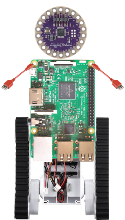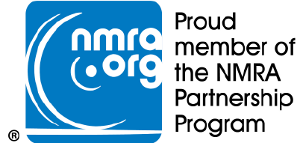Coming soon: ESP32-PWMHalfSidingSMD
Tags: Deepwoods Software, ESP32, Model Railroad, news, OpenLCB, OpenMRN, Point Sense, PWM LED Signal Lamp Driver, Stall Motor Driver, The Country Robot
Open design available on GitHub: https://github.com/RobertPHeller/RPi-RRCircuits/tree/master/ESP32-PWMHalfSidingSMD. Firmware also available on GitHub: https://github.com/RobertPHeller/RPi-RRCircuits/tree/master/ESP32MRNSketches/ESP32-PWMHalfSiding.
This is a circuit board that supports an ESP32 Dev Kit board or TTGO-T1 board to manage one half (one end) of a siding. This board can also be used to manage two bi-directional single track ABS blocks or one bi-directional dual track ABS block. There are other trackwork cases this board can handle as well.
The board contains these I/O sections:
-
Two occupancy detectors. These are optoisolator based, so they will work for both DC and DCC systems.
-
Two stall-motor with point sense.
-
Sixteen PWM Led drivers. These are meant to light lamps in signal heads.
This board uses six GPIO pins and one I2C channel:
-
GPIO0 Motor Select 1: select the position of stall motor 1.
-
GPIO12 Motor Select 2: select the position of stall motor 2.
-
GPIO34 Point Sense 1: return the state of the points for stall motor 1.
-
GPIO35 Point Sense 2: return the state of the points for stall motor 2.
-
GPIO26 Occupancy Detector 1.
-
GPIO27 Occupancy Detector 2.
-
GPIO16 (Optional) Output enable for the PWM LED Controller.
-
I2C Address 0x40 A PCA9685 16-channel, 12-bit PWM LED Controller.
Each of the motor drive circuits is through a TC4428, which can drive up to 1.5A, which is way more needed to drive a typical stall motor. It is enough to drive a pair of stall motors, wired in parallel as would be the case for a cross over.
Circuit Description
Turnout Control
The turnout control has two parts. There is an output section that contains two TC4428 chips. Each chip has a non-inverting and an inverting driver. The inputs of both drivers are connected to one of the motor GPIO pins. The output are wired to the terminal block for a one of the motors. For any given logic state of the motor control output, one of the drivers is "on" and the other is "off", thus one motor terminal is ground and one is raised to the 12V supply. This means alternative states of the logic line will drive the stall motor in alternative directions.
The other section is a pair of flip-flop debounce circuits, one for each of two SPDT switch contacts that report the position of the turnout points. The output of these flip-flops goes to a pair of GPIO input pins.
CAN Transceiver
This section contains the CAN Transceiver, along with a termination jumper block. Power insertion and pick off and the RJ45 Jacks.
Power Supply
This section contains a 5V power supply that takes the nominal 12V on the CAN power bus and regulates it down to 5V to supply the ESP32 MCU board.
Occupancy Detectors
The occupancy detectors use optoisolators in series with the track power supply. There is a heavy duty bridge rectifier in parallel with the optoisolators to carry the bulk of the current to the track. They will work with either DC or DCC track power.
PWM LED Driver
The PWM LED Driver uses a PCA9685 which is a 16 channel, 12 bit PWD LED driver. A pair of octal MOSFET drivers and series load resistors are also included on the board. The MOSFET drivers come in both inverting (low-side drive) and non-inverting (high-side drive), so it is possible to support both common anode and common cathode LED signals.
User Installed Parts
| Index | Qty | Refs | Mouser Part Number | Description |
|---|---|---|---|---|
| 1 | 2 | J1, J2 | 710-615008144221 | RJ45 Jacks |
| 2 | 1 | JP1 | 649-67997-404HLF | Termination Jumper |
| 3 | 2 | P601, P602 | 651-1725724 | Signal Lamp Terminals |
| 4 | 3 | T1, T2, T601 | 651-1725656 | LCC and Signal power |
| 5 | 2 | T3, T6 | 490-TB007-508-02BE | Occupancy Terminals |
| 6 | 2 | T4, T5 | 651-1725685 | Turnout terminals |
| 7 | 2 | U0 | 517-929974-01-19-RK | MCU Headers |
| 8 | 1 | U0 | 517-929850-01-18-10 | MCU Headers |







